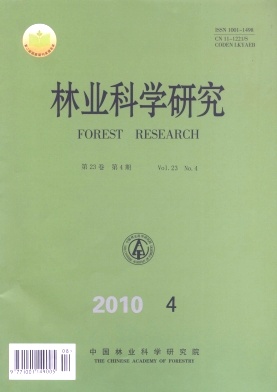|
[1]
|
Wenk G, Antanatis V, Smelko S. Waldertragslehre [M]. Berlin: Deutscher Landwirtschaftsverlag, 1990:39-47 |
|
[2]
|
Kramer H. Waldwachstumslehre [M]. Berlin: Verlag Paul Parey Hamburg und Berlin, 1988:53-58 |
|
[3]
|
Sloboda B. Zur Darstellung von Wachstumsprozessen mit Hilfe von Differentialgleichungen erster Ordnung[J]. Mitteilungen der Baden-Wuerttembergischen Forstlichen Versuchs-und Forschungsanstalt,1971,32:1-109 |
|
[4]
|
Clutter J L, Fortson J C, Pienaar L V, et al. Timber Management: A Quantitative Approach [M]. New York: John Wiley & Sons, Inc., 1983 |
|
[5]
|
Aaron R W, David W Hann, David E H. Modeling top height growth of red alder plantations[J]. Forest Ecology and Management,2009,258:323-331 |
|
[6]
|
南方十四省(区)杉木栽培科研协作组. 全国杉木地位指数表的编制与应用[J].林业科学,1982,18(3):266-277
|
|
[7]
|
Gadow K V, Hui G Y. Modelling forest development [M]. Dordrecht: Kluwer Academic Publisher, 1999:50-60 |
|
[8]
|
骆期邦,吴志德,蒋菊生,等. Richards函数拟合多形地位指数模型的研究[J].林业科学研究,1989,2(6):534-539
|
|
[9]
|
克劳斯·冯佳多,惠刚盈. 森林生长与干扰模拟[M].Goettingen: Cuvillier Verlag, 1998:23-34
|
|
[10]
|
Luis F, Margarida T, Marta B C. Modelling dominant height growth of Douglas-fir (Pseudotsuga menziesii(Mirb.)Franco) in Portugal[J].Forestry,2003,76:509-523 |
|
[11]
|
Cieszewski C J, Strub M R. Generalized algebraic difference approach derivation of dynamic site equations with polymorphism and variable asymptotes from exponential and logarithmic functions[J]. Forest Science, 2008, 54:303-315 |
|
[12]
|
段爱国,张建国.杉木人工林优势高生长模拟及多形地位指数方程[J].林业科学,2004,40(6):13-19
|
|
[13]
|
McDill M E, Amateis R L. Measuring forest site qualityusing the parameters of a dimensionally compatible height growth function[J]. Forest Science, 1992, 38:409-429 |
|
[14]
|
Cailliez F, Alder D. Forest volume estimation and yield prediction. Vol.1.Volume Estimation. Vol.2. Yield Prediction[M]. Rome:Food and Agriculture Organization of the United Nations, 1980: 98-194 |
|
[15]
|
Mingliang Wang, Bruce E B, Dehai Zhao. An empirical comparison of two subject-specific approaches to dominant heights modeling: The dummy variable method and the mixed model method[J]. Forest Ecology and Management, 2008,255:2659-2669 |
|
[16]
|
唐守正.广西大青山马尾松全林整体生长模型及应用[J].林业科学研究,1991,4(增刊):8-14
|
|
[17]
|
Amaro A, David R, Margarida T, et al. Modelling dominant height growth: Eucalyptus plantation in Portugal [J]. Forest Science, 1998, 44(1):37-46 |
|
[18]
|
惠刚盈,徐 海,胡艳波. 林木最近距离分布预测模型的研究[J].北京林业大学学报,2006,28(5):18-21
|
|
[19]
|
唐守正,郎奎建,李海奎.统计与生物数学模型计算[M].北京:科学出版社,2009:174-176
|
|
[20]
|
Ulises Diéguez-Aranda, Harold E Burkhart, Roque Rodríguez-Soalleiro. Modeling dominant height growth of radiata pine(Pinus radiata D.Don) plantations in northwestern Spain[J]. Forest Ecology and Management, 2005, 215:271-284 |





 DownLoad:
DownLoad: